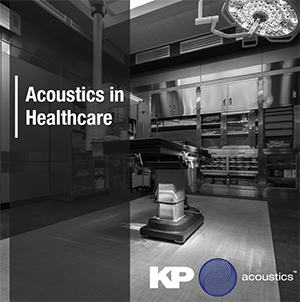Innovations in product testing for medical equipment: Can the latest technologies apply when testing medical devices?
08 September 2022
With the use of technologies such as artificial intelligence (AI) and Internet of Things (IoT) based predictive maintenance, there are now more ways to put products through meticulous testing to ensure they are fit for the end user.

Here, KP Acoustics Research Labs analyses the most recent trends in vibration testing and how they can be applied to product development in the medical sector.
Vibration testing: the purpose
To be considered fit for use, medical devices are required to go through rigorous testing and protocols to meet medical grade standards. Vibration testing can ensure medical devices such as infusion pumps and nebulisers are fit for purpose and able to function under vibratory conditions in everyday use or while in transit. What is more, vibration testing can supply qualitative data about potential issues with devices. These problems include misalignment, imbalance, wear, looseness and more.
Optimising AI for vibration testing
AI and machine learning technologies are great at carrying out automated routine tests repetitively at rapid speed. AI-based vibration testing tools can analyse data and seek out its relevancy or any anomalies that may require the attention of the product testing analysts. Rather than programming AI-driven vibration testing equipment to know what an anomaly within a product might look like in a particular piece of equipment — AI can learn data by assessing the standard vibrations of a medical device. Once the AI understands the machine’s standard of operation, it can simply recognise deviations in vibratory patterns.
Though AI within vibration testing is a promising innovation, it is not a replacement. Vibration testing is a task that requires a prominent level of precision, accuracy and expertise. Missing an anomaly or problem — especially in medical equipment — could have detrimental consequences.
IoT-driven predictive maintenance
Unexpected medical equipment failure can result in costly repairs, unplanned maintenance, and downtime. Predictive maintenance is a process of monitoring and testing equipment while it functions to recognise any issues that may occur in the future. Vibration-based condition testing can be implemented to distinguish any faults in medical equipment.
To prevent the routine of ineffective maintenance or unexpected equipment fault or malfunction, analysts and manufacturers can leverage IoT-based data to carry out predictive maintenance assessments. Effective predictive maintenance requires the skill to process copious quantities of data, meaning that IoT-based solutions will allow for storing terabytes of information and run machine learning software on multiple computers to predict potential hazards and pinpoint faults in equipment. IoT in predictive maintenance requires the use of sensors to collect information from the equipment being tested. It is then possible to analyse the data and generate reports.
So, how does this apply to medical equipment? As well as monitoring vibration, IoT predictive maintenance would be conducive to collecting machine data such as operating temperature, supply voltage and current — ensuring that medical equipment is fit for use on patients and within the applicable environments.
International standards
Additionally, for equipment to be fit for application in hospitals and other places within the medical sector, it must first meet the British Standards Institution (BSI) standard — or EN 60601, the equivalent to the International Electrotechnical Commission (IEC) standard.
“EN 60601 is a group of standards which covers the safety, essential performance and electromagnetic compatibility of medical electrical equipment and related systems. It is equivalent to the international standard IEC 60601 and comprises over 70 individual standards.” —BSI Group
According to the BSI, manufacturers of medical equipment must first undergo an extensive nine-step certification process including training, pre-assessment, assessment, certification, and compliance.
At KP Acoustics Research Labs we offer a range of product testing services for prototype products, including noise and vibration certification. Our team has extensive experience in conducting noise and vibration testing of medical equipment. So, if you’re looking for a partner with the in-house knowledge and capability to meet the rigorous standards of the medical sector, get in contact with us today.
Other Press Releases By This Company
- 09/04/2024 - Enhancing Acoustic Environments: Introducing Our Services in Cyprus and the Middle East
- 07/11/2022 - How to tackle the world’s most common occupational disease
- 28/10/2022 - Research Labs secures IoA accreditation
- 03/10/2022 - Noise monitoring for rail infrastructure projects
- 22/09/2022 - Air source heat pumps and the importance of consulting with an acoustics consultant prior to installation
- 14/09/2022 - Occupational noise exposure: Supporting seafarers, fishermen and workers
- 08/09/2022 - Why noise impact assessments are for everyone




